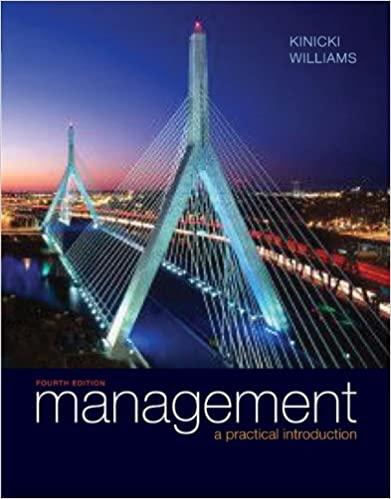Question
Case: LENOVO - A New Chinese-American Recipe for Success Lenovo was started by Chinese entrepreneur Liu Chuanzhi in 1984. The firm dabbled in a variety
Case: LENOVO - A New Chinese-American Recipe for Success Lenovo was started by Chinese entrepreneur Liu Chuanzhi in 1984. The firm dabbled in a variety of high-tech industries before it began to focus on the personal computer market. Initially Lenovo made computers for other firms, most notably AST Research. In 1990, though, the firm launched its own brand of PC and by 1997 Lenovo was the top selling PC company in its home country. Unfortunately, the company was not very successful in getting its computers accepted outside of China. One reason for this was the lack of brand recognition. Another was that Lenovo simply did not have very many top managers with global experience. Hence, they did not really understand foreign markets or how to penetrate them. But that began to change in 2005. During the early 2000s IBM, one of the world's most recognized computer companies, was developing a new strategy emphasizing informational technology and business services and concentrating on business clients. IBM also felt that PCs were dropping in price so quickly that reasonable profit margins would be difficult to maintain. When the company finally decided to sell its PC operation in 2005, Lenovo was quick to jump on the opportunity and bought IBM's PC business for $1.75 billion. Lenovo was allowed to continue using the IBM name through 2007 but then began to brand all of its PCs with the Lenovo name. Along with the PC business itself, Lenovo also got another extremely important asseta team of skilled top managers well-versed in global PC markets. Senior IBM executives were integrated into the top management structure and one of them, Stephen Ward, was appointed CEO of Lenovo. Chuanzhi, meanwhile, moved into the background but remained a director. But almost from the start problems began to surface. Ward, for example, was extremely autocratic in how he made decisions and this alienated his new Chinese colleagues. And at a more general level, the U.S. managers tried to impose a rigid, centralized, and bureaucratic structure on the new Lenovo. The Chinese, meanwhile, were highly resistant to these efforts, strongly preferring the more traditional consensus-style structure that they had used previously. Within a matter of months things came to a head. Among other changes, Ward was pushed out and replaced with William Amelio, a senior executive recruited from Dell Computer Asia/Pacific operations. Amelio expressed an interest in trying to move Lenovo back toward the traditional Chinese structure. He also thought that the firm could benefit from an infusion of additional perspectives, so he began to aggressively recruit new executives from other international high-tech firms. His Chinese colleagues, meanwhile, took a wait-and-see attitude. William Amelio's efforts at Lenovo yielded mixed results. He led the development of a sophisticated and long-term international strategy that is still being followed today. He also successfully integrated numerous divisions and functions between the old IBM unit and Lenovo. But there were also major problems. For one thing, Lenovo began to lose market share. Its new products were not well received in the marketplace, and profits began to drop. Internal conflict also became more significant, with the old-guard IBM executives in one camp, the Chinese executives who grew up in Lenovo in a different camp, and the newly recruited executives from other firms in still a third camp. Finally, in 2010 Liu Chuanzhi decided that he had to take action. He pushed Amelio to resign and took control of the firm himself. He then quickly restructured the upper ranks of Lenovo to fall more in line with the traditional Chinese approach. Under Amelio's U.S.-style approach, the CEO had made most of the major decisions and then worked with business unit heads to execute them. Chuanzhi, though, formed the eight top managers at Lenovo into a close-knit team and then they all worked together to make decisions and formulate plans. Right now it's too soon to know if the changes at Lenovo will improve its fortunes or not. But Chuanzhi believes that his new approach, which he calls a blend of old Chinese thinking and modern global thinking, will soon carry the day. Questions for Discussion 1. Identify as many examples related to organization structure as possible in this case. 2. The case illustrates how culture might affect structure in different countries. If Lenovo established a major division in the United States, do you think its structure should be closer to the Chinese model or the U.S. model? Why? 3. What role have goals and strategy played in the Lenovo's journey? 4. How would you describe the corporate culture and strategy at Lenovo? 5. Describe what problems they faced while struggling through setting up strategic goals. 6. Critically evaluate the Lenovo's managerial practices in terms of: a) Manging and Adapting Change, Which Type and How? b) Competetive Advantage c) Corporate Strategy
Step by Step Solution
There are 3 Steps involved in it
Step: 1

Get Instant Access to Expert-Tailored Solutions
See step-by-step solutions with expert insights and AI powered tools for academic success
Step: 2

Step: 3

Ace Your Homework with AI
Get the answers you need in no time with our AI-driven, step-by-step assistance
Get Started


